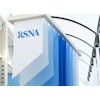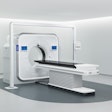After showing so much promise in the first half of 2001, a reality check hit the U.S. PET market in August when the Center for Medicare and Medicaid Services (CMS) proposed drastic cuts in reimbursement.
Nuclear medicine advocates are organizing resistance to the cuts, which they fear will eviscerate PET's growth by making it economically impossible to operate a PET center profitably. Under the CMS proposal, FDG-PET reimbursement would drop from the current rate of $2,331.18 to an average of $841.94. Both rates include the cost of FDG, which runs about $750 per dose wholesale.
On the positive side, PET made headlines in 2001 as it demonstrated its usefulness in a broad range of clinical applications. Some of the most intriguing work is taking place with hybrid functional-anatomical devices that combine a CT scanner with a PET system, and both GE and Siemens rolled out commercial products this year.
PET is also demonstrating its utility in imaging early signs of Alzheimer’s disease, detecting a highly characteristic pattern of cerebral glucose hypometabolism years before symptoms appear. In oncology imaging, PET has made important strides in the diagnosis and staging of breast, lung, lymphatic, and other cancers -- and in the critical task of gauging treatment response.
As in other modalities, Philips’ acquisition of Marconi is causing ripple effects in nuclear medicine. Marconi’s product line and installed base will further strengthen Philips’ position in the modality, which was already strong thanks to its purchase of ADAC Laboratories in 2000.
CTI
This Knoxville, TN, company has historically sold its dedicated PET scanners exclusively through Siemens Medical Solutions, but CTI is going direct to end-users with three new products at the 2001 RSNA show -- a line of hybrid CT/PET systems called ECAT Reveal, a medical cyclotron called RDS Eclipse, and an online practice marketing program for PET centers.
The ECAT Reveal HD and ECAT Reveal RT CT/PET scanners were developed at the University of Pittsburgh. ECAT Reveal HD utilizes CTI's ECAT HR+ PET scanner technology with what the vendor calls the highest intrinsic resolution of any commercial PET scanner. ECAT Reveal RT utilizes lutetium oxyorthosilicate (LSO) crystal technology similar to the ECAT Accel PET scanner.
PowerSolutions Network is an Internet-enabled application service provider (ASP) product that gives online access to operational and promotional processes for PET operations. According to CTI, PowerSolutions Network offers providers a tool to market their services to physicians and patients. Beta sites will begin operation in December 2001.
The RDS Eclipse cyclotron triples the yield of traditional RDS cyclotrons without significantly increasing radiation exposure levels surrounding the unit, according to the vendor. Eclipse is self-shielded and may be field upgraded.
GE Medical Systems
Although GE has displayed its hybrid CT/PET scanner at previous RSNA meetings, this will be the first year that the system will be shown at the RSNA show with FDA clearance and under its official brand name, Discovery LS. The scanner marries an Advance NXi dedicated PET system with a LightSpeed QXi multislice CT scanner, and sells for about $2.7 million.
Look for the Waukesha, WI, company to highlight a new handheld PC version of its Entegra nuclear medicine workstation. Called Entegra PE, the computer is based on a Compaq iPAQ computer running Microsoft’s Pocket PC operating system.
Nuclear medicine physicians using the computer can view images, communicate with other clinicians, and transfer date wirelessly to other Entegra workstations. Entegra PE is pending FDA clearance.
Philips Nuclear Medicine
Philips is retiring the ADAC brand and will now sell all of its products under the Philips marque. These will also include the Marconi gamma cameras that Philips acquired when it bought the Cleveland vendor in October. The ADAC product nomenclature will be retained as part of product names, however.
On the new product front, Philips will introduce CardioMD, a new fixed 90° gamma camera with a compact design for small spaces such as outpatient facilities. The system includes a Pegasys workstation and cardiac image processing applications such as AutoSPECT Plus, AutoQUANT, CardiaQ, and Emory Tool Box. CardioMD has received FDA 510(k) clearance.
Philips will show a new image acquisition workstation for its novel Skylight ceiling-mounted gamma camera. Called JetStream, the computer is based on the Java programming language and features improvements in workflow, user interface, and flexibility, according to Philips.
In the PET realm, Philips will highlight Gemini and Allegro, two PET cameras under development that have been displayed at previous meetings. Allegro is a full-ring high-end system based on gadolinium oxyorthosilicate (GSO) detectors that represents Philips’ entry into the premium PET niche, while Gemini is a hybrid CT/PET device. Allegro has FDA clearance, while Gemini will be shown as a work-in-progress.
Finally, Philips will show improvements to CPET Plus, the company’s entry-level PET camera, which is based on sodium iodide detectors.
Siemens Medical Solutions - Nuclear Medicine Group
Siemens of Hoffman Estates, IL, will highlight Biograph, the company's hybrid CT/PET system that began commercial shipments earlier this year. Biograph combines a Somatom Emotion spiral CT scanner with an ECAT Exact HR+ premium PET system, to enable facilities to conduct hybrid functional-anatomical studies.
Siemens will display clinical data and images collected with Biograph at the first two clinical sites where the system is installed: The University of Pittsburgh in Pennsylvania, and Memorial Sloan-Kettering Cancer Center in New York City.
Siemens will also demonstrate clinical images from Accel, a new high-throughput PET camera that uses LSO as a detector material, rather than the BGO used in most PET cameras. Accel sites are imaging up to 11 patients a day, compared with five or six at conventional PET sites, and the system has could potentially scan as many as 20 patients a day, according to Siemens.
E.Cam Duet should also get some attention. The gamma camera uses a segmented 1-inch sodium iodide crystal that ensures high performance from low to high energy ranges, according to the company. E.Cam's versatility at low and medium energies is important given the current reimbursement environment, as gamma camera PET currently isn't eligible for Medicare or Medicaid reimbursement.
On the workstation front, Siemens will emphasize version 2.0 of its eSoft workstation software. The new software has full functionality for image acquisition and processing, and also addresses workflow issues in terms of image routing and distribution, according to the company. eSoft 2.0 supports Syngo, the company's workstation platform, and is capable of displaying images from other modalities.
By Brian Casey
AuntMinnie.com staff writer
November 14, 2001
Copyright © 2001 AuntMinnie.com



















